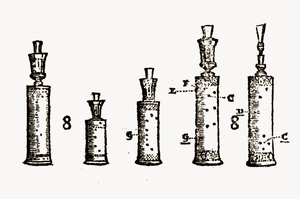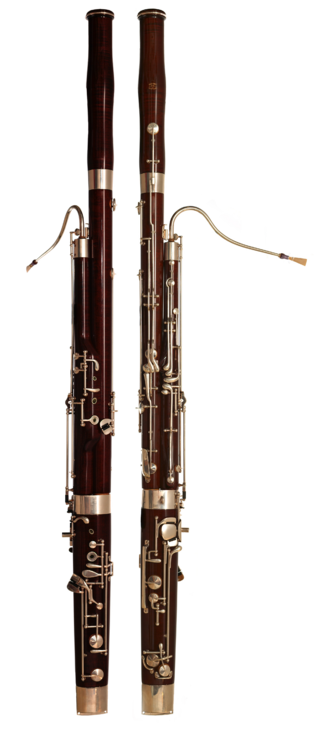
The bassoon is a woodwind instrument in the double reed family, which plays in the tenor and bass ranges. It is composed of six pieces, and is usually made of wood. It is known for its distinctive tone color, wide range, versatility, and virtuosity. It is a non-transposing instrument and typically its music is written in the bass and tenor clefs, and sometimes in the treble. There are two forms of modern bassoon: the Buffet and Heckel systems. It is typically played while sitting using a seat strap, but can be played while standing if the player has a harness to hold the instrument. Sound is produced by rolling both lips over the reed and blowing direct air pressure to cause the reed to vibrate. Its fingering system can be quite complex when compared to those of other instruments. Appearing in its modern form in the 19th century, the bassoon figures prominently in orchestral, concert band, and chamber music literature, and is occasionally heard in pop, rock, and jazz settings as well. One who plays a bassoon is called a bassoonist.

The recorder is a family of woodwind musical instruments in the group known as internal duct flutes: flutes with a whistle mouthpiece, also known as fipple flutes. A recorder can be distinguished from other duct flutes by the presence of a thumb-hole for the upper hand and seven finger-holes: three for the upper hand and four for the lower. It is the most prominent duct flute in the western classical tradition.
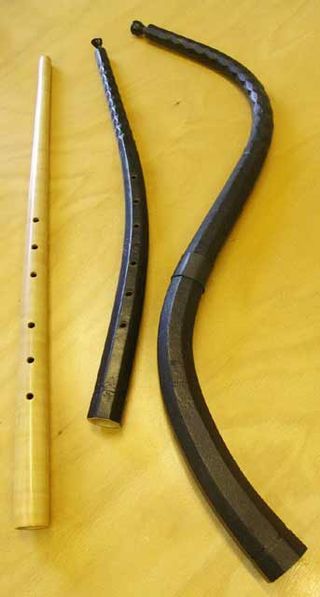
The cornett, cornetto, or zink is an early wind instrument that dates from the Medieval, Renaissance and Baroque periods, popular from 1500 to 1650.

The crumhorn is a double reed instrument of the woodwind family, most commonly used during the Renaissance period. In modern times, particularly since the 1960s, there has been a revival of interest in early music, and crumhorns are being played again. It was also spelled krummhorn, krumhorn, krum horn, and cremorne.

The shawm is a conical bore, double-reed woodwind instrument made in Europe from the 12th century to the present day. It achieved its peak of popularity during the medieval and Renaissance periods, after which it was gradually eclipsed by the oboe family of descendant instruments in classical music. It is likely to have come to Western Europe from the Eastern Mediterranean around the time of the Crusades. Double-reed instruments similar to the shawm were long present in Southern Europe and the East, for instance the ancient Greek, and later Byzantine, aulos, the Persian sorna, and the Armenian duduk.
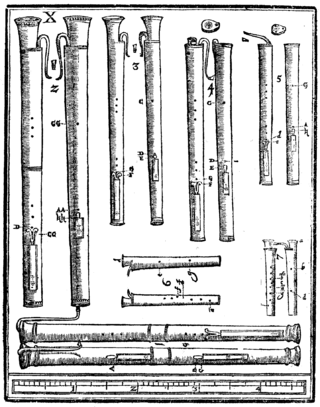
The dulcian is a Renaissance woodwind instrument, with a double reed and a folded conical bore. Equivalent terms include English: curtal, German: Dulzian, French: douçaine, Dutch: dulciaan, Italian: dulciana, Spanish: bajón, and Portuguese: baixão.

A rauschpfeife is a capped conical reed musical instrument of the woodwind family, used in Europe in the 16th and 17th centuries. In common with the crumhorn and cornamuse, it is a wooden double-reed instrument with the reed enclosed in a windcap. The player blows into a slot in the top of the windcap to produce the sound.

The kortholt is a musical instrument of the woodwind family, used in the Renaissance period.

The cornamuse is a double reed instrument dating from the Renaissance period. It is similar to the crumhorn in having a windcap over the reed and cylindrical bore. The only evidence for the cornamuse comes from a description and a few comments by Michael Praetorius in Syntagma musicum II, published in 1619. Since the paragraph by Praetorius is the only clear description of the cornamuse and no period specimen or picture has been found, all reconstructions of the instrument rely on a certain amount of conjecture.

The bassanello was a Renaissance double reed woodwind instrument which was described in 1619 by Michael Praetorius in his Syntagma Musicum II:

The violin family of musical instruments was developed in Italy in the 16th century. At the time the name of this family of instruments was viole da braccio which was used to distinguish them from the viol family. The standard modern violin family consists of the violin, viola, cello, and (possibly) double bass.

During the reign of Queen Elizabeth I (1558–1603), English art and high culture reached a pinnacle known as the height of the English Renaissance. Elizabethan music experienced a shift in popularity from sacred to secular music and the rise of instrumental music. Professional musicians were employed by the Church of England, the nobility, and the rising middle-class.
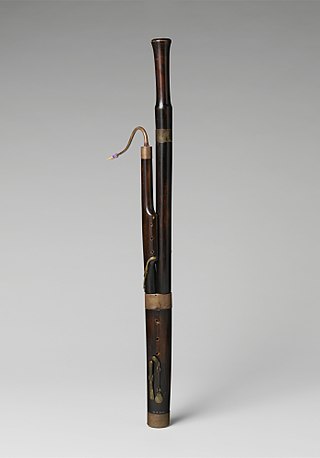
The tenor bassoon or tenoroon is a member of the bassoon family of double reed woodwind instruments. Similar to the alto bassoon, also called octave bassoon, it is relatively rare.

In music, the bore of a wind instrument is its interior chamber. This defines a flow path through which air travels, which is set into vibration to produce sounds. The shape of the bore has a strong influence on the instrument's timbre.

The tenor cornett or lizard was a common musical instrument in the Renaissance and Baroque periods. This instrument was normally built in C and the pedal (lowest) note of the majority of tenor cornetts was the C below middle C. A number of surviving instruments feature a key to secure the lowest note. The instrument has a useful range of approximately two and a half octaves, however, an experienced player with a strong embouchure may be able to push the instrument higher.

The great bass recorder is a member of the recorder family. With the revival of the recorder by Arnold Dolmetsch, who chose Baroque music and the corresponding recorder types as a fixed point, consideration was given to the design of recorder types larger than the bass recorder. The great bass recorder has up to seven keys, which serve to facilitate access to the finger holes. For modern large bass recorders woods like maple or African Bubinga are used. The term usually applies to an instrument with range is c–d2 (g2), but has also been used to describe an instrument descending to B♭ or else to the low bass recorder in F, alternatively known as a contrabass. When "great bass" is used for the instrument in low F, the instruments in C and B♭ are referred to as "quart-bass" and "quint-bass", respectively, because they are a fourth and fifth below the ordinary small bass, or "basset". The prefixes "great" and "contra" refer to the registers from C to B and from ͵C to ͵B, respectively, in Helmholtz pitch notation.

Doedelzak is the name for bagpipes in the Netherlands and the Flemish (Dutch) speaking northern part of Belgium. This is the region where painter Pieter Bruegel the Elder lived and worked. Formerly pijpzak and moezelzak were common. The latter two names, generic at one time, survive in the piposa from Picardy and muchosa in the actual Belgian province of Hainaut. According to certain sources, muse once was the earliest generic name for this family of instruments in a large part of Europe and survives itself in the actual French generic name of cornemuse for all bagpipes.
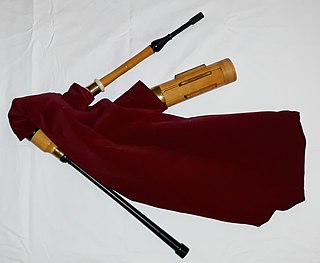
Shuttle pipes are a type of bagpipes which derive their name from the drones used to produce the harmony. Rather than the long tube-like drones of most bagpipes, shuttle pipes use a shuttle drone, a cylindrical chamber enclosing a series of folded drone tubes, each terminating in a slot covered by a sliding "shuttle" which can be adjusted to lengthen or shorten the distance traveled by air moving through the tube, thus flattening or sharpening the pitch of the note produced.
The garklein recorder in C, also known as the sopranissimo recorder or piccolo recorder, is the smallest size of the recorder family. Its range is C6–A7 (C8). The name garklein is German for "quite small", and is also sometimes used to describe the sopranino in G. Although some modern German makers use the single-word form Garkleinflötlein, this is without historical precedent. Double holes for the two lowest notes (used on the larger recorders to achieve a fully chromatic scale) are uncommon. The instrument is usually notated in the treble clef two octaves lower than its actual sound. The garklein recorder is only about 16 to 18 cm long and is different from larger recorders in that it is usually made in one piece due to its size.

A bass recorder is a wind instrument in F3 that belongs to the family of recorders.
